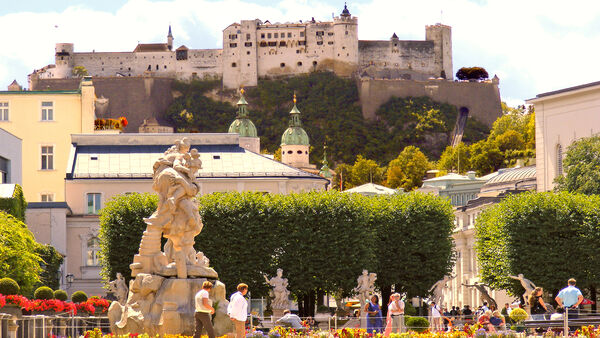‘The Sound of Music’ Debunked

By Rick Steves
Rather than visit the real-life sights from the life of Maria von Trapp and family, most tourists in Salzburg want to see the places where Julie Andrews and company were filmed performing the Hollywood version of the former almost-nun's story. Local guides are happy not to burst any S.O.M. pilgrim's bubble, but anyone visiting Salzburg to get a sense of the real Maria should keep these points in mind:
- "Edelweiss" is not a cherished Austrian folk tune or national anthem. Like all the "Austrian" music in The Sound of Music, it was composed for Broadway by Rodgers and Hammerstein. It was the last composition that the famed team wrote together, as Hammerstein died in 1960 — nine months after the musical opened.
- The Sound of Music implies that Maria was devoutly religious throughout her life, but Maria's foster parents raised her as a socialist and atheist. Maria discovered her religious calling while studying to be a teacher. After completing school, she joined the convent not as a nun, but as a novitiate (that is, she hadn't taken her vows yet).
- Maria's position was not as governess to all the children, as portrayed in the musical, but specifically as governess and teacher for the Captain's second-oldest daughter, also called Maria, who was bedridden with rheumatic fever.
- The Captain didn't run a tight domestic ship. In fact, his seven children were as unruly as most. But he did use a whistle to call them — each kid was trained to respond to a certain pitch.
- Though the Von Trapp family did have seven children, the show changed all their names and even their genders. As an adult, Rupert, the eldest child, responded to the often-asked question, "Which one are you?" with a simple, "I'm Liesl!" Maria and the Captain later had three more children together.
- The family didn't escape by hiking to Switzerland (which is a five-hour drive away). Rather, they pretended to go on one of their frequent mountain hikes. With only the possessions in their backpacks, they "hiked" all the way to the train station (it was at the edge of their estate) and took a train to Italy. The movie scene showing them climbing into Switzerland was actually filmed near Berchtesgaden, Germany…home to Hitler's Eagle's Nest, and certainly not a smart place to flee to.
- The actual Von Trapp family house exists...but it's not the one in the film. The mansion in the movie is actually two different buildings, one used for the front, the other for the back. The interiors were all filmed on Hollywood sets. And the much-vaunted "Sixteen Going on Seventeen" gazebo, which you can now see at Hellbrunn Palace, was built just for the movie, then moved twice to reach its current location.
- For the film, Boris Levin designed a reproduction of Nonnberg Abbey courtyard so faithful to the original (down to its cobblestones and stained-glass windows) that many still believe the cloister scenes were really shot at the abbey. And no matter what you hear in Salzburg, the graveyard scene (in which the Von Trapps hide from the Nazis) was also filmed on the Fox lot.
- In 1956, a German film producer offered Maria $10,000 for the rights to her book. She asked for royalties, too, and a share of the profits. The agent explained that German law forbids film companies from paying royalties to foreigners (Maria had by then become a US citizen). She agreed to the contract and unknowingly signed away all film rights to her story. Only a few weeks later, he offered to pay immediately if she would accept $9,000 in cash. Because it was more money than the family had seen in all of their years of singing, she accepted the deal. Later, she discovered the agent had swindled them — no such law existed.
Rodgers, Hammerstein, and other producers gave the Von Trapps a percentage of the royalties, even though they weren't required to — but it was a fraction of what they otherwise would have earned. But Maria wasn't bitter. She said, "The great good the film and the play are doing to individual lives is far beyond money."

